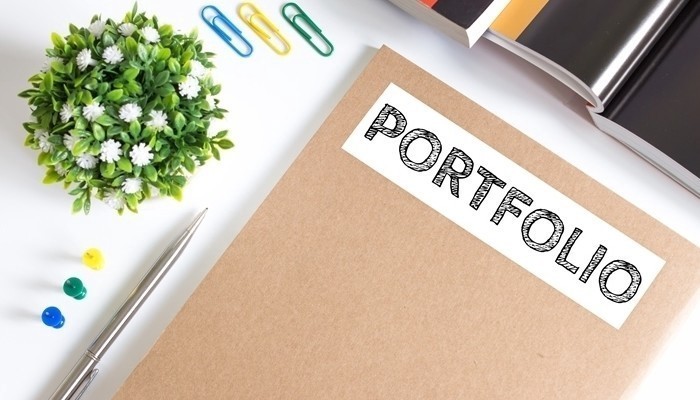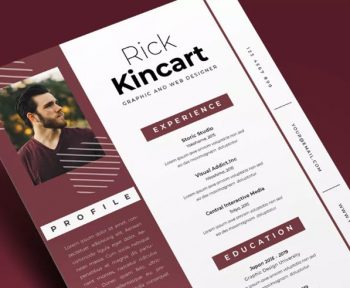If you are in a creative profession, the curriculum alone may not be sufficient to fully represent your profession, but the creation of a portfolio may also be necessary. But what is a portfolio? In this article we will neither talk about it, we will therefore see what it means to have a portfolio and how to create a portfolio to accompany the curriculum or to use alone.
The portfolio therefore does not take the place of the curriculum vitae but completes it and makes it exhaustive in the case of creative works.
We will consider in particular the portfolio for the creative professions, the portfolio for photographers and the portfolio for architects. Then read on to find out more!

What is a portfolio?
Let’s start with the definition of a portfolio: what is it all about?
A portfolio is nothing more than a structured collection of your works, your photographs, your sketches and technical drawings.
The portfolio serves to demonstrate one’s professionalism and the work carried out during the course of one’s professional career.
Although in some sectors and work areas the portfolio is widely used, however, it cannot replace the curriculum vitae, but can only enhance its possibilities.
The sectors in which the portfolio is most used are those that tend to be more creative, such as photography, graphics, journalism, fashion, but it can also be used in the case of other professions that do not necessarily have to do with the creative field, but must still represent a series of prototypes made or successes or awards won.
The portfolio can be both digital and paper, it is advisable to have both formats ready. However, even the portfolio has evolved in the digital age and, if you are a creative professional, it is very important to have an E-portfolio, that is a digital portfolio, whether it is a website or a page created ad hoc.
How to make a photographic portfolio
The reasons for having a portfolio, if you are part of the ranks of creative professionals, are many and varied.
If you need to find new clients and be found online, a portfolio is the first step to ensuring your success!
For photography, we must abandon all traditions and play everything in the digital world. Most photographers are now hired online and found via their website or social media channels. For example, Instagram itself can be a real portfolio for a photographer, or at least a first business card. The website also represents the portfolio for photographers, or at least it can contain it.
The portfolio in the digital age
A good photographer will insert his most representative shots of a certain sector, for example, the best shots of weddings, if it is a photographer specialized in weddings, but he will not be limited only to that. In addition to photos, it is very important to describe your shots with appropriate words, words that can describe the work that takes place and how you are inspired to do it.
In addition to your personal website and social channels, nowadays, for both photographers and designers, there is the possibility of creating a digital portfolio thanks to different platforms that make the task easier.
How to make a portfolio for architects
The first important action to perform is to carefully select your projects to be able to show your skills and projects in the best possible way. At the beginning of the portfolio it is also a good idea to include a brief presentation, attaching, if deemed necessary, also a photo, provided it is professional and made by a photographer. It is also very important not to forget to enter your personal contacts: telephone number and a work e-mail address cannot be missing.
The format of a portfolio
How it should be the format of a portfolio? Obviously, everything depends on the sector, but in the case of architects, the best format is certainly an A3 sheet to show your projects in the best way.
The portfolio, however, does not have to be in A3 format at all costs, it can also be very well in a standard A4 format.
Also, the structure is very very important. After an impactful cover, made to make your skills clear right away, you can insert a blank sheet and then an introduction to your profession and your presentation, also professional.
The graphics should follow your style but should try to be simple, sober and elegant at the same time. You can also insert a quote, as long as it is not trivial and is inspirational in your sector.

After the introduction, you can also insert your CV, if you deem it appropriate, or you can continue directly with your portfolio content.
The projects section is the most important in the portfolio, so this is where you need to focus all your energies. This is the most important point: insert your projects in chronological order but also sorted by theme, depending on how you think is more appropriate.
Finally, insert a closing page, and if you want, insert an original detail for concluding, such as a quote or your digital signature.
Print the portfolio or not?
Finally, also the layout (and any printing) are very important details. For the layout, if you are not 100% sure that you are doing a great professional job, we recommend that you consult an expert.
Remember, the portfolio must demonstrate your professionalism in all respects, not it can in no way be rough work. If you need to print it, professionalism is everything. Do not do it at home but contact a professional service or a copy shop, for advice on the best type of paper depending on whether it is a photographic portfolio or not.




